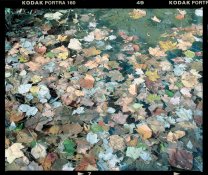How about disclosing them here, where we all can see them? I know from thousands of hours experience where the hard limits of Epson files are - and where the limitations of higher end scans are too.
No problem, with next workflow you will obtain (for MF and up) results that will match 95% of the times (at least) what can be obtained by a drum or highend flatbed, only (say) 5% of the times you'll get an slightly better result from a drum.
1) Ensure film flatness with the new ANR glass holders or by producing flat negatives. Use a (cheap) HEPA air purifier always (drying, hadling, scanning, enlarger...)
2) Check focus, adjust height in the new ANR hodels or hack the older holders to nail focus.
3) Realize that with the Epson you use 3 image resolutions: a) scanning resolution, b) edition resolution c) release resolution.
4) Scan at the higher resolution possible while it icreases quality, if your edition dpi is 3200 then scan at 4800, or 6400, today computers are fast, SSD or M.2 disks are amazingly fast, and PCs have many Gb of RAM, so take full advantage of that.
5) Scan 16 bits per channel, take all histogram, don't allow the automatic setting crop the Dynamic Range to deliver a final image if the image has to be edited Professionally. Use Multi-Exposure when necessary (if important ultra deep shadows have to be recovered in Velvia/Provia)
6) Save the scan in TIFF format, jpg and bmp will loss the 16 bits depth
7) In PS then make a mild sharpening with no overshot. Reduce image size to the edition size by selecting "bicubic, ideal for reduction" in the Combo control at the bottom of the Image Size dialog. Save that "RAW COPY" for achival
8) Edit all in 16 bits/channel, adjust curves, learn to use layers for a proficient edition, etc and use 3D LUT Creator or equivalent for color management. Use Soft Proofing and test prints to speed up optimization.
9) Make advanced sharpening, with different local intensities and strengths depending on gray level Save an "EDITED COPY" for achival, conserving layers, etc.... probably in PSD format.
10) Reduce image size to the release size, it can be exactly the pixel count in the printer, in the internet image size, in the TV/monitor or in the projector, for total control you issue a pixel for each pixel in the destination device.
11) Make a Pixel Level sharpening, again avoiding any overshot. Save a "RELEASED COPY"
12) Make a Presentation sharpening, calculating radius from image size and from viewing distance. Usially Convert to 8bits/channel and jpg (or what required required). Save a "DEVICE OPTIMIZED COPY".
_________
Note that a Pro scanner may deliver directly the edition dpi image, because Pro scaners usually optimize digitally very well the image before delivery, in some Pro scanners the internally made sharpening cannot be enterely disabled, this is not the case of the Epson, best is to take the image as Raw as possible and optimizing the image manually with advanced tools.
A Pro scanning service wants a high degree of automation in the optimization to save manpower, an artist may prefer doing the optimization manually for total control.
_________
Lachlan, I can tell you for sure that with a proficient usage the V850 delivers totally Pro results, like that Side by Sude made by Pali K suggests.
Sure that a drum is a better scanner, but this only makes a difference in certain cases: what really counts is the skills one has for an optimal workflow and a refined aesthetic criterion in the edition.
Digital workflow is not about pixel peeping, it's about skills.
I know from thousands of hours experience where the hard limits of Epson files are - and where the limitations of higher end scans are too.
Clearly, you don't know how to optimally use an V700, probably the limitations are in your capabilities, not in the machine.
See again the crops scanned in that side by side, that operator knows how to extract Pro results from the V700, me also I know how to do it.
Don't you know how to do it ? Take a sample negative and I'll guide you step by step, I only need an AnyDesk connection.
First we'll check your focus with a USAF 1951 glass slide, if it delivers 2900H 2300V then we'll proceed with the workflow.




 This is absolutely false.
This is absolutely false.